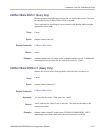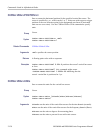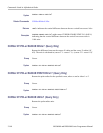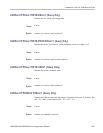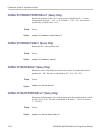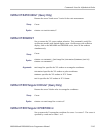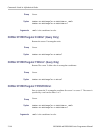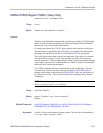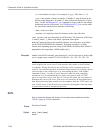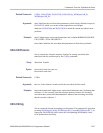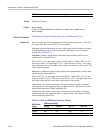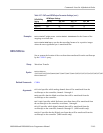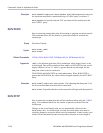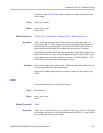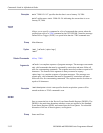
Commands Listed in Alphabetical Order
CURSor:XY:RE
CTangular:Y:UNIts? (Query O nly)
Returns the cursor Y rectangular units.
Group
Cursor
Syntax
CURSor:XY:RECTangular:Y:UN Its?
CURVe
Transfers waveform data to and from the oscilloscope in binary or ASCII format.
Each waveform transferred includes a waveform preamble which contains the
data format, scale, and associated information.
For a nalog waveforms, the CURVe? query transfers data from the oscilloscope.
Thedatasourceisspecified by the DATa:SOUrce command. The first and last
data points are specifi ed by the DATa:STARt and DATa:STOP commands.
The oscilloscope returns data from the last acquisition if the source is a channel
waveform that is being previewed. The data does not reflect the acquisition
preview parameters. The user should always follow acquisition parameter changes
with a single sequence OPC command prior to CURVe? to ensure the return data
reflects the n ew acquisition parameters.
The CURVe command transfers waveform
data to the o scilloscope. The data
is stored in the reference memory location specified by DATa:DESTination,
starting with the data point specified by DATa:STARt. Only one waveform can
be transferred at a time. The waveform will only be displayed if the reference
is displayed.
NOTE. Transferring large volumes of data to or from the oscilloscope takes time.
ASCII waveform transfer is very in
efficient.
Group
Waveform Transfer
Syntax
CURVe { <Block>|<asc curve>|DIGtal}
CURVe?
Related Commands
DATa:DESTination, DATa:SOUrce, DATa:STARt, DATa:STOP, WFMInpre?,
WFMInpre:BYT_Nr, WFMOutpre?, HEADer
Arguments
<Block> is the waveform data in binary format. The waveform is formatted as:
#<x><yyy><data><newline>, where:
MSO4000 and DPO4000 Series Programmer Manual 2-145



